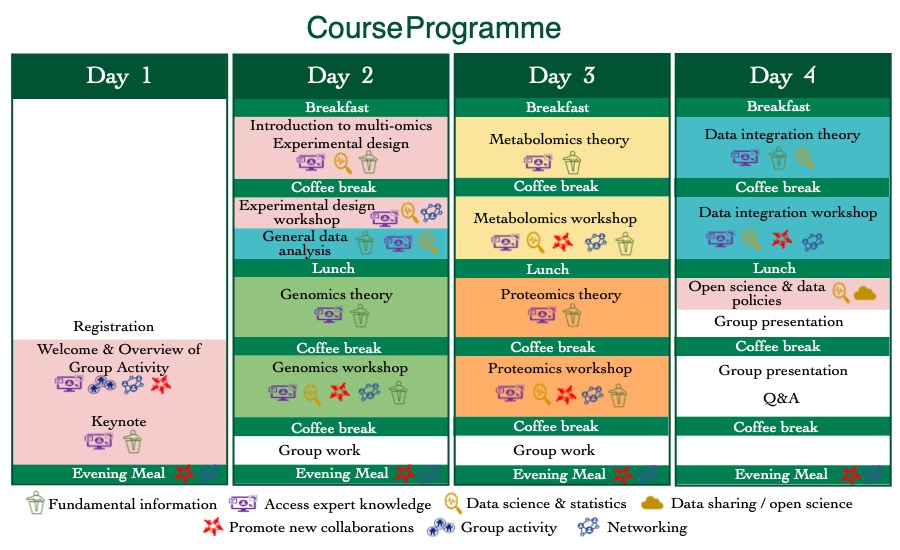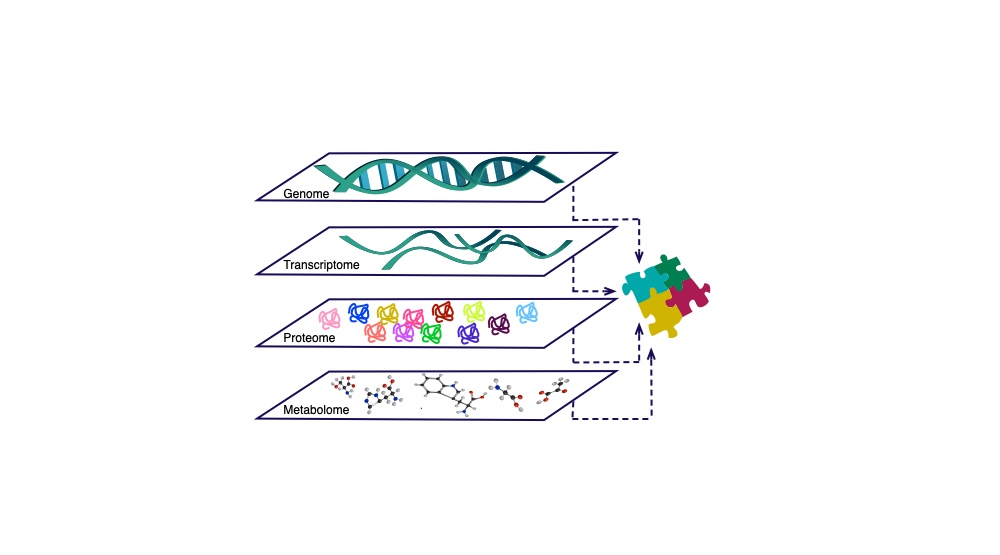The application of multi-omics provides new insights to understand environmental problems including biodiversity loss, emerging pathogens and pollution, and address specific challenges to the environmental sciences. In this course you will develop an understanding of each 'omics technique (genomics, proteomics and metabolomics) and the computational tools to interrogate and integrate these data.
The course will be delivered by a team from the Liverpool Shared Research Facilities who are experts in genomics (Professor Paterson & Dr Gemmel, Centre for Genomics Research), proteomics (Professor Eyers, Drs Emmott & Brownridge, Centre for Proteome Research), metabolomics (Professors Goodacre & Dunn, Drs Winder & Burke, Centre for Metabolomics Research and Dr Phelan High-field NMR Facility) and data science (Drs Caamano-Gutierrez, Soul & Johnson, Computational Biology Facility).

The training will be delivered using a blend of presentations, case studies, hands-on bioinformatics workshops and group activities. During the week you will work on a problem-based group activity applying the approaches and skills you will develop during the course. Dedicated sessions will be included to discuss the group activity and your own research with the panel of experts and there will be a Q&A session on the final day. Attendees will have the opportunity to submit their own data intergration challenges with several examples selected to explore how to solve complex challenges.
Learning Outcomes
- Develop an understanding of the 'omic approaches that can be applied in environmental research
- Design robust experimental strategies to apply omics approaches to environmental problems
- Evaluate the application of analytical methods to measure the omics
- Develop an understanding of the statistical methods commonly used in single omics and multi-omics integration, open access tools and software options
- Gain confidence in both undertaking data-driven approaches and exploring data to generate testable hypotheses
Course Date: TBC
Level
The course is aimed at individuals with minimal previous experience of applying the 'omics in their research.
Requirements
You will need to bring your own laptop to the training course.
Back to: Research
